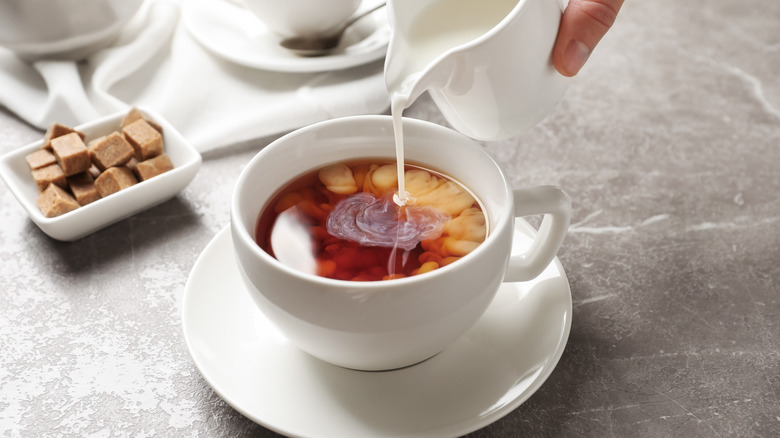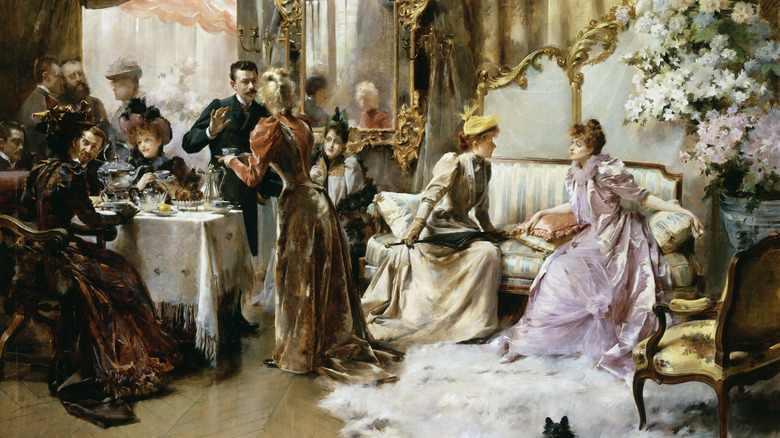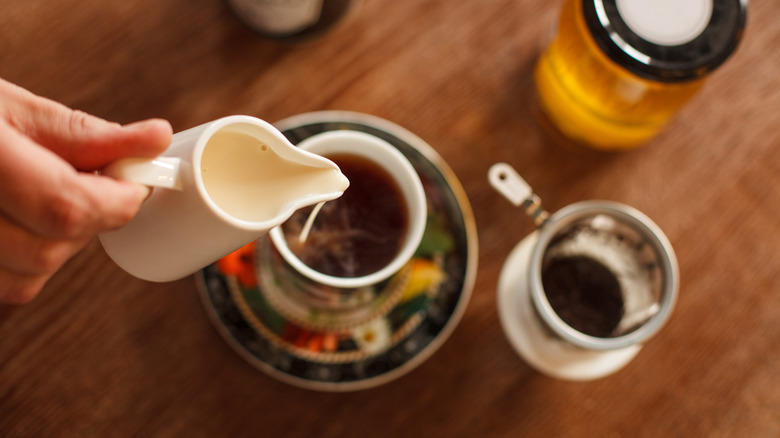How Tea Became An Integral Part Of British Culture
If you're looking for a sip of caffeinated goodness while in the U.K., be prepared to be offered a brewed cup of tea more often than a mug of coffee. An estimated 100 million cups of tea are consumed in Britain every day, totaling 36 billion per year.
Whether it's bright and early or mid-afternoon, there is no bad time to enjoy a cup of tea in the U.K. It's not uncommon for British people to sip on a cup of tea to start their morning, then enjoy a cup with their lunch, and have a few more before heading to bed. In fact, the UK Tea and Infusions Association found in their 2023 census that a whopping 91% of respondents regularly drink tea while 15% of those enjoy between five and six cups of tea per day. For many British people, they don't need a reason to indulge in a cup of tea, it is simply an embedded part of their culture, though the best kind of tea is a widely popular debate.
Tea used to be reserved for the wealthy
While tea is clearly an integral part of British culture today, surprisingly, most tea plants are not actually native to the U.K. — the countries that produce the most tea are China, India, and Kenya. So how did a plant and cultural practice deriving from Southeast Asia become synonymous with the British? Many historians say we have Catherine of Braganza, daughter of Portuguese King John IV, to thank for introducing British people to the glamorous act of tea drinking. Portugal's trade routes gave them direct access to foreign goods that the British were not able to easily obtain, one of which was loose-leaf tea. When Catherine married King Charles II, she packed enough tea to begin a cultural craze amongst the admiring citizens of England. Researchers at The University of Cambridge have even called the queen "a tea addict" because of her excessive tea-drinking habits that were highly influential amongst her royal court.
Once those closest to Catherine began to pick up on the exotic new trend, tea began to transform from a faraway potion brewed by neighboring countries to a beverage sought after by Britain's most rich and fashionable. While tea is readily available and enjoyed by practically everyone in British culture today, only the highest of classes could afford to enjoy tea on a regular basis when it was first introduced, due to its high price and short supply.
Today, tea is an affordable and delicious beverage that everyone can enjoy
Trade route complications initially made it extremely expensive to import tea from China all the way to Britain. Tea taxes were so expensive back in 1689 that it almost caused sales in Britain to stop altogether. People resorted to purchasing the leaves from tea smugglers who sold unregulated tea for a lower cost, sacrificing the safety and quality of the goods. The government stepped in practically one hundred years later in 1784 to regulate taxes and keep tea smuggling at bay. The British, noticing just how desired this tea was to the public, began to work directly with the East India Company. The tea distributors based in India were exclusively trading with China until demand from the British expanded the trade routes from India — much of which was under British rule at the time — directly into Britain.
With the expansion of East India Company's trade directly with Britain, tea prices drastically declined and tea became more widely available for the lower classes of England to enjoy. At one point in British history, tea was even more sought after than booze. Tea rooms and cafes became increasingly popular in the 1800s, offering the brewed beverage as a cheaper alternative for members of the Protestant church looking to abstain from alcohol. To this day, if you see a British person enjoying a beverage, there is about a 40% chance it is some type of tea.


